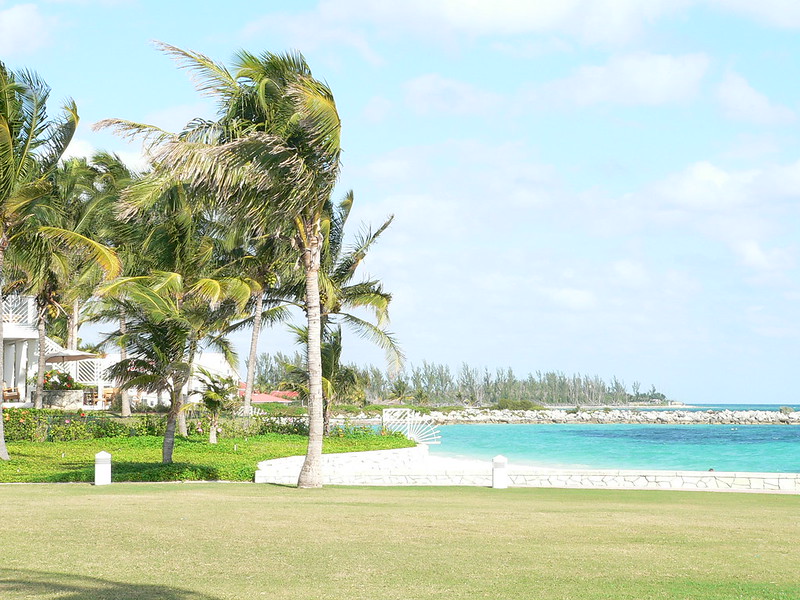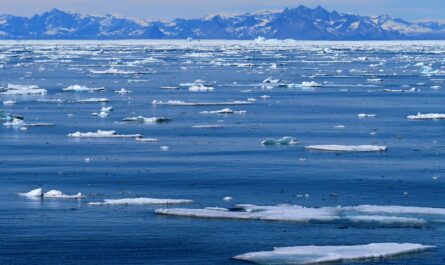The Bahamas is a stunning archipelago made up of over 700 islands and cays, surrounded by crystal-clear waters and home to some of the most diverse and vibrant coral reefs in the world. These coral reefs are not just picturesque underwater landscapes; they are teeming with life, acting as critical marine biodiversity hotspots that support an array of species from small fish to apex predators like sharks. However, like coral reefs worldwide, those in the Bahamas are facing an existential threat from coral bleaching—a phenomenon driven largely by climate change.
Coral reefs are frequently compared to “rainforests of the ocean” because of their immense biodiversity and critical role in marine ecosystems. They provide shelter and food for countless marine species, protect coastlines from storm surges, and even support local economies through tourism and fisheries. Unfortunately, rising ocean temperatures, increased pollution, and other environmental stressors have placed these ecosystems at risk, with coral bleaching emerging as one of the most visible and destructive consequences of global warming. In the Bahamas, coral bleaching poses a significant threat to both the environment and the communities that rely on healthy reefs for their livelihoods.
The Importance of Coral Reefs in the Bahamas
Coral reefs play a crucial role in the overall health of the marine ecosystem in the Bahamas. They serve as a vital habitat for more than 25% of all marine species, despite covering less than 1% of the ocean floor globally. In the Bahamas, coral reefs are a sanctuary for a wide variety of species, including fish, mollusks, crustaceans, and other invertebrates. Larger predators, such as sharks and rays, are also attracted to these reefs, which provide ample feeding and breeding grounds.
One of the most significant coral reef systems in the Bahamas is the Andros Barrier Reef, the third-largest barrier reef in the world. Stretching over 190 miles along the east coast of Andros Island, it is an essential habitat for species such as parrotfish, angelfish, groupers, and lobsters, as well as an important economic resource for the fishing and tourism industries.
Coral reefs are also natural coastal protectors, acting as buffers that reduce the impact of waves and storm surges, which is especially important in a region prone to hurricanes. The physical structure of the reefs absorbs the force of incoming waves, minimizing coastal erosion and protecting coastal communities from storm damage. Additionally, reefs contribute to the white sand beaches that attract millions of tourists to the Bahamas each year, supporting the country’s robust tourism industry.
Coral Bleaching: What It Is and Why It’s Happening
Coral bleaching occurs when coral polyps—tiny animals that make up coral reefs—expel the symbiotic algae (zooxanthellae) living in their tissues. These algae are responsible for the coral’s vibrant colors and, more importantly, provide up to 90% of the coral’s energy through photosynthesis. Without zooxanthellae, the coral turns white, or “bleached,” and becomes highly stressed.
If the bleaching event is short-lived, corals can recover by reabsorbing the algae. However, prolonged bleaching can lead to coral death, which in turn affects the entire reef ecosystem. Coral bleaching is primarily caused by rising ocean temperatures. Even a small increase of 1-2°C above normal temperatures can trigger a bleaching event, making climate change the most significant driver of coral bleaching globally.
Other factors contributing to coral bleaching include:
- Ocean Acidification: Increased levels of carbon dioxide (CO₂) in the atmosphere lead to higher levels of CO₂ being absorbed by the ocean. This causes ocean acidification, which reduces the ability of coral polyps to build their calcium carbonate skeletons, weakening the overall structure of the reef.
- Pollution: Runoff from agriculture, coastal development, and sewage contributes to water pollution, which can damage coral reefs. Nutrient pollution, particularly from nitrogen and phosphorus, can cause algal blooms that block sunlight and further stress coral systems.
- Overfishing: The depletion of certain fish species that help maintain coral health, such as parrotfish, which graze on algae, can contribute to coral decline by allowing algae to overgrow and smother the reefs.
- Storms and Hurricanes: The Bahamas is in the Atlantic hurricane belt, and powerful storms can physically damage coral reefs by breaking apart their delicate structures.
The State of Coral Reefs in the Bahamas
In recent years, coral reefs in the Bahamas have experienced severe coral bleaching events, with some reefs losing up to 30% of their coral cover. The Andros Barrier Reef, which has been a vibrant marine ecosystem for thousands of years, is not immune to the pressures of climate change and human activities.
The Bahamas experienced significant coral bleaching in 2015 and again in 2019, coinciding with global heatwaves that raised sea temperatures. These bleaching events, exacerbated by local stressors such as pollution and coastal development, have placed the Bahamas’ reefs in a fragile state. The increase in water temperatures during these heatwaves stressed the coral polyps, leading to widespread bleaching.
Moreover, in 2019, Hurricane Dorian, one of the most powerful storms to hit the region, caused further damage to coral reefs in the northern Bahamas. The physical force of the hurricane shattered some reef structures, while storm surges and freshwater flooding altered the salinity of coastal waters, putting additional strain on marine life.
The Impact of Coral Bleaching on Marine Biodiversity
Coral bleaching has devastating consequences for marine biodiversity. Coral reefs provide food and shelter for a wide range of species, and when corals die, the entire ecosystem can collapse. Fish and invertebrates that depend on coral for food and protection are forced to migrate to other areas, if they can, or risk population decline. For example, herbivorous fish like parrotfish and surgeonfish, which graze on algae growing on coral, help maintain a balance in the reef ecosystem. Without coral, these species have fewer places to live and feed.
The loss of coral reefs also affects larger predators, such as sharks and rays, which rely on healthy reef systems to support their prey populations. As coral reefs degrade, fish populations diminish, leading to a decline in shark numbers and altering the delicate balance of the marine food chain.
Additionally, coral reefs serve as nurseries for many fish species, including commercially important species like groupers and snappers. The degradation of reefs means fewer safe spaces for juvenile fish to grow, leading to long-term declines in fish populations, which can impact local fishing industries.
The Economic Impact of Coral Bleaching in the Bahamas
Coral bleaching not only harms marine biodiversity but also has significant economic repercussions for the Bahamas. The country’s economy is heavily reliant on tourism, with its coral reefs playing a central role in attracting visitors for activities like snorkeling, scuba diving, and fishing. In fact, coral reefs in the Bahamas generate an estimated $150 million annually in tourism revenue.
When coral reefs degrade due to bleaching, the tourism industry suffers. Tourists who come to the Bahamas for its underwater beauty may find themselves disappointed by bleached or dead reefs, leading to a decline in tourist numbers. This, in turn, affects local businesses, from dive shops and tour operators to hotels and restaurants.
Fishing is another major economic activity in the Bahamas, with the country’s artisanal and commercial fishing industries relying heavily on healthy coral reefs. The loss of coral habitats means a reduction in fish populations, leading to lower catches and diminished income for local fishers.
Efforts to Combat Coral Bleaching in the Bahamas
Despite the challenges, there are ongoing efforts in the Bahamas to combat coral bleaching and protect the country’s coral reefs. These initiatives involve a combination of conservation, education, and restoration projects aimed at preserving the resilience of coral ecosystems.
- Marine Protected Areas (MPAs): The Bahamas has established a network of MPAs, which are areas designated for the conservation of marine ecosystems. These protected areas help reduce the impact of human activities, such as fishing and tourism, on coral reefs, allowing the ecosystems to recover and thrive. MPAs like the Exuma Cays Land and Sea Park are helping to safeguard some of the country’s most important coral reefs.
- Coral Restoration Programs: In recent years, organizations in the Bahamas have launched coral restoration projects aimed at rebuilding damaged reefs. These programs involve growing coral fragments in nurseries and then transplanting them onto degraded reef systems. By restoring coral cover, these projects aim to enhance the resilience of reefs and improve their ability to withstand future bleaching events.
- Public Awareness and Education: Raising awareness about the importance of coral reefs and the threats they face is crucial for garnering public support for conservation efforts. Educational programs targeting local communities, tourists, and schoolchildren help promote sustainable practices, such as responsible snorkeling and diving, reducing pollution, and supporting marine conservation initiatives.
- Research and Monitoring: Ongoing scientific research and monitoring are essential for understanding the health of coral reefs in the Bahamas and tracking the effects of bleaching. By studying the factors that contribute to coral resilience, scientists can develop better strategies for protecting these ecosystems in the face of climate change.
The Future of the Bahamas’ Coral Reefs
The future of coral reefs in the Bahamas is uncertain, but there is hope. While coral bleaching poses a serious threat, proactive conservation efforts, coupled with global action on climate change, can help protect these vital ecosystems. Reducing greenhouse gas emissions, improving local conservation practices, and continuing to invest in coral restoration projects are critical steps toward ensuring that the Bahamas’ coral reefs remain vibrant and biodiverse for generations to come.
Conclusion
The coral reefs of the Bahamas are among the most biologically diverse and ecologically significant ecosystems in the world, providing essential habitats for marine species and supporting the local economy through tourism and fishing. However, these reefs are at risk of coral bleaching due to rising ocean temperatures, pollution, and other human activities. While the future of the Bahamas’ coral reefs is threatened, efforts to combat coral bleaching and restore degraded reefs offer hope for the survival of these marine biodiversity hotspots. Protecting the Bahamas’ coral reefs is not just an environmental imperative but also an economic one, ensuring that future generations can continue to benefit from the rich natural resources of the sea.



